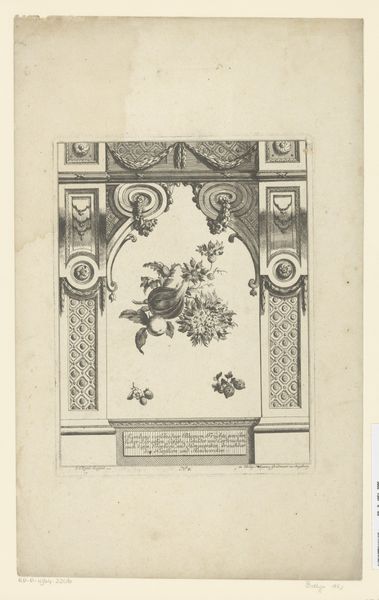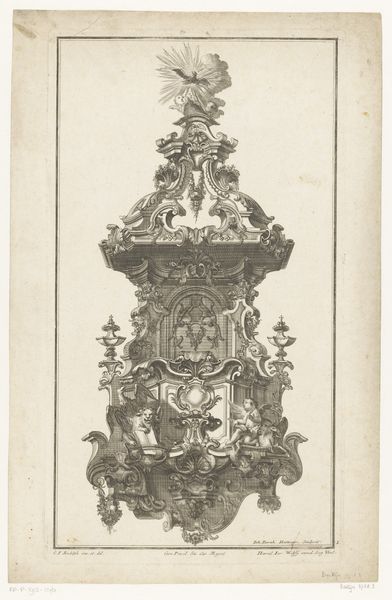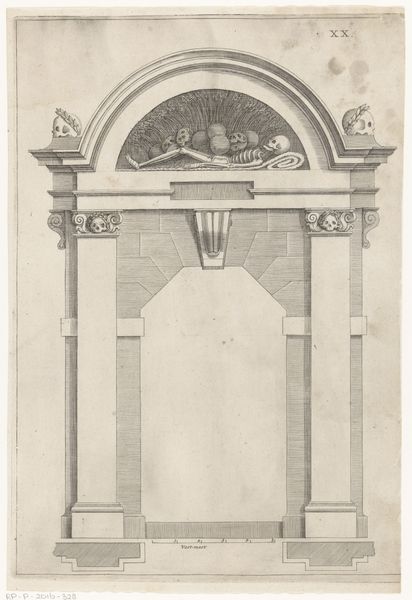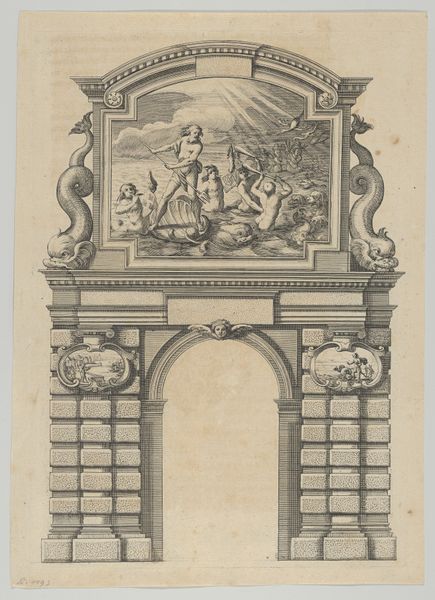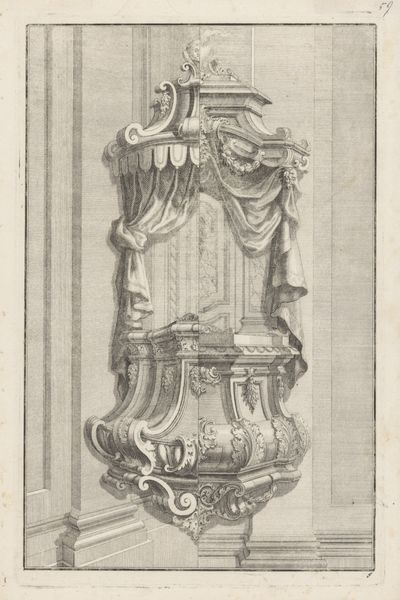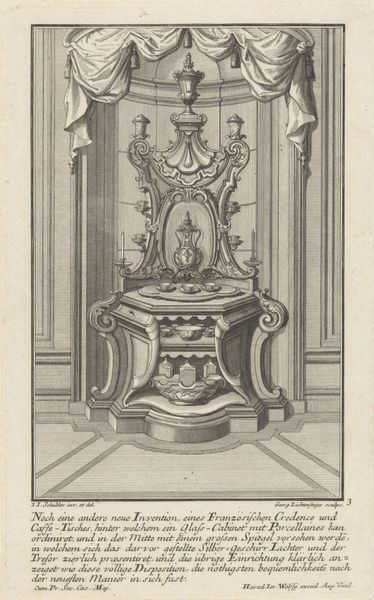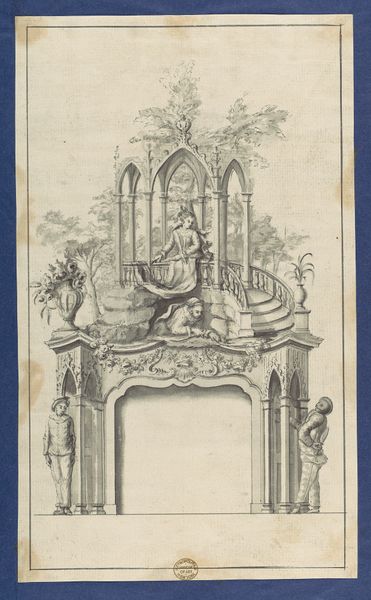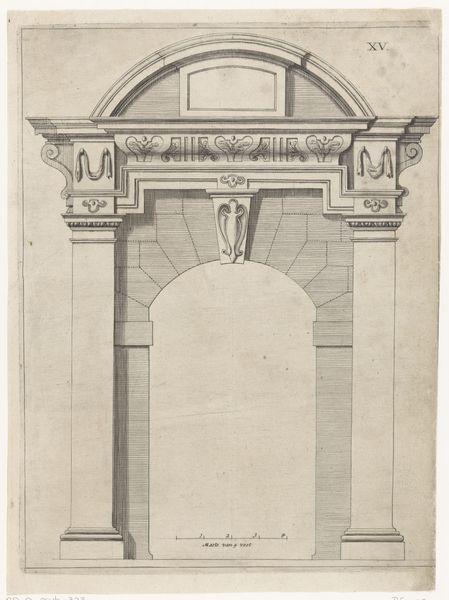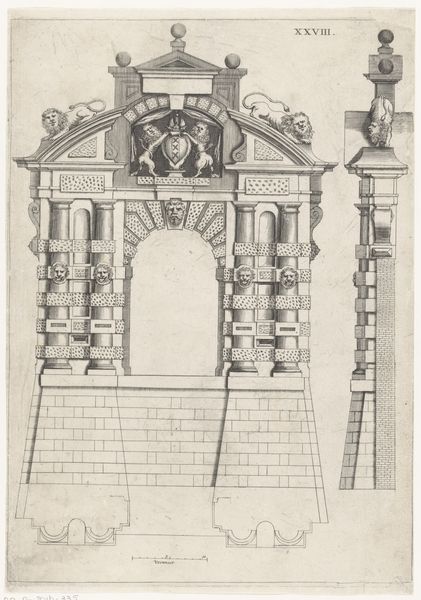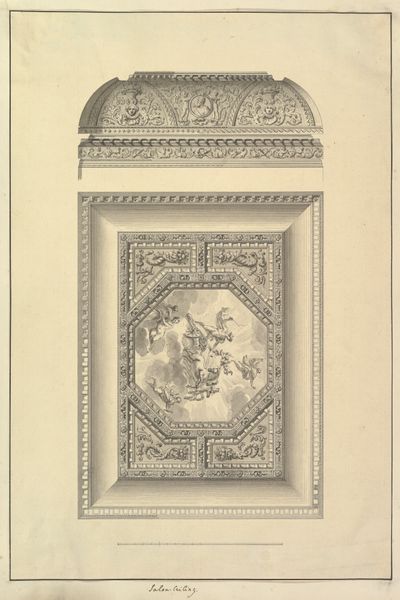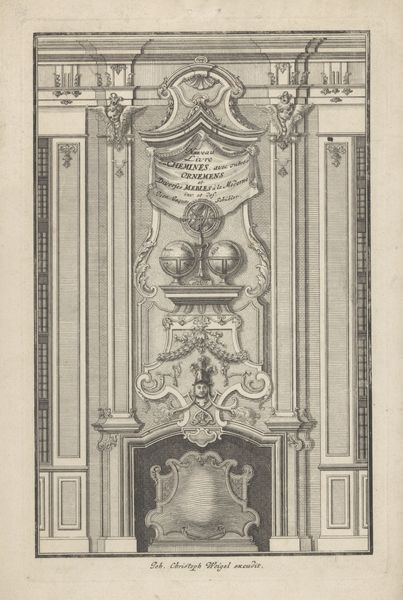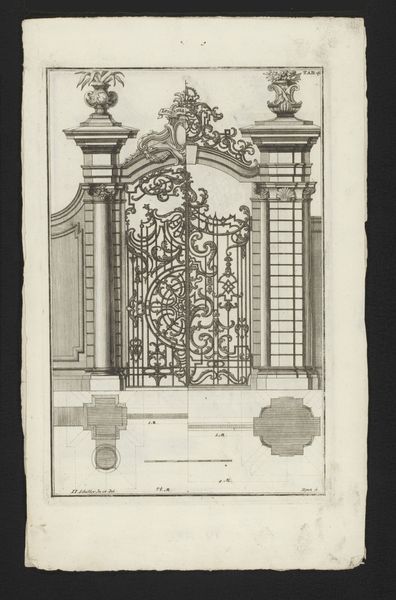
Triumphal arch, from 'Éloges et discours sur la triomphante réception du Roy en sa ville de Paris ...' by Jean-Baptiste de Machault 1629
0:00
0:00
drawing, print, engraving, architecture
#
drawing
#
baroque
# print
#
engraving
#
architecture
Dimensions: Sheet: 11 13/16 × 8 9/16 in. (30 × 21.8 cm) Plate: 11 1/8 × 7 15/16 in. (28.3 × 20.2 cm)
Copyright: Public Domain
Curator: Melchior Tavernier's "Triumphal Arch" from 1629 depicts a structure erected for the triumphant entry of the King into Paris. It's part of a larger collection, ‘Éloges et discours sur la triomphante réception du Roy en sa ville de Paris...’, offering insights into royal power. Editor: My immediate impression is how much labor went into not just creating the actual structure, but into documenting it so meticulously. You can almost feel the weight of the stone, translated into the careful hatching of the engraving. Curator: Precisely! These arches were temporary, often constructed from wood and plaster, intended as symbolic assertions of royal authority. Considering its ephemeral nature, Tavernier's print functions almost as a record, solidifying the fleeting spectacle. Editor: The engraving technique itself becomes crucial. The detail, the repetition of forms...look at those repeating block patterns forming the sides. It's a real material language being employed, almost industrial in its regularity. This arch performs a very particular type of cultural work. Curator: Absolutely. Think about the context—17th-century Paris, a city grappling with questions of absolutism. These arches served as visual propaganda, reinforcing the King's divine right through allegorical figures, coats of arms, and imposing architectural grandeur. Notice the crowd perched on the structure - who are these spectators? Editor: They highlight a tension. The spectacle is *for* the people, but also *above* them, contained, and literally placed on the fringes. Power, performance, spectatorship – it all collapses into this image produced through a distinct material process. Who was he selling the copies of the work to? Curator: Ultimately, this print raises questions about the very nature of triumphalism. Who benefits from these displays of power, and whose narratives are privileged? Considering the upheaval of the era, the image resonates with complexity, rather than simple glorification. Editor: And understanding Tavernier’s craft is fundamental. By paying close attention to how this image was made, how it was distributed, we start to grasp its social function, its very purpose as a reproducible object meant to amplify power through materiality and visual form. Curator: Thank you, you have brought a richer appreciation for the many layers involved in what on the surface may appear a celebratory rendering. Editor: Indeed. It underscores the point that art is always implicated in larger systems of production, consumption, and power dynamics.
Comments
No comments
Be the first to comment and join the conversation on the ultimate creative platform.
